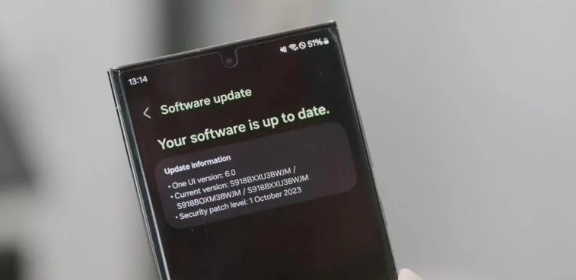Home >Technology peripherals >It Industry >Android system update changes are coming. How will Samsung deal with the challenge of 'seamless updates'?
Android system update changes are coming. How will Samsung deal with the challenge of 'seamless updates'?
- WBOYWBOYWBOYWBOYWBOYWBOYWBOYWBOYWBOYWBOYWBOYWBOYWBforward
- 2024-02-22 12:00:051015browse
February 22 news, Google introduced the "seamless update" function for its Android system a few years ago, however, Samsung has always adhered to its traditional update strategy. So far, this persistence does not seem to have caused significant trouble to Samsung, but as technology continues to evolve, Samsung may encounter many challenges if it continues to resist "seamless updates".
For users who are familiar with Google Pixel series mobile phones, the "seamless update" function has become part of their daily update experience. The core of this feature is that it allows the phone to download and install updates while the user can still continue to use the phone without interruption. This is achieved through a technique called A/B updating, where the phone runs two system partitions simultaneously, one active for daily use, while the other inactive partition is updated in the background. When the update is complete and a reboot is required, the phone smoothly switches to the updated partition, allowing for a seamless update experience.

However, Samsung has always been a staunch opponent of "seamless updates", preferring to use traditional update methods. Despite past rumors that Android 13 may force Samsung to change its stance, but Google isn't making "seamless updates" a mandatory requirement. However, a comment recently discovered in the Android Open Source Project (AOSP) seems to indicate a change of direction. According to comments, Android may soon stop supporting non-A/B updates, which means Samsung and other manufacturers that insist on traditional update methods will have to face technical choices.
According to the editor’s understanding, if Android really stops supporting non-A/B updates, then manufacturers such as Samsung will have to reconsider their update strategies. They can choose to accept "seamless updates" to provide a smoother user experience; or they can try to find other ways to update, which may even require rolling back Google's changes. Regardless of which approach they choose, however, it will be something to watch in the Android update landscape going forward.
Although the traditional update method still has advantages in some aspects, such as taking up less storage space and faster update speed, it also has some disadvantages, such as users being unable to use their mobile phones during the update process. With the advancement of technology and users' continuous pursuit of experience, whether this update method can still meet user needs is a question that manufacturers such as Samsung need to think deeply about. As smartphone functions continue to expand and user experience becomes increasingly important, manufacturers need to continue to innovate to provide more convenient and efficient update methods to improve user satisfaction and market competitiveness. Therefore, manufacturers should continue to explore new update methods while retaining traditional advantages to better meet user needs and improve user experience.
The above is the detailed content of Android system update changes are coming. How will Samsung deal with the challenge of 'seamless updates'?. For more information, please follow other related articles on the PHP Chinese website!

